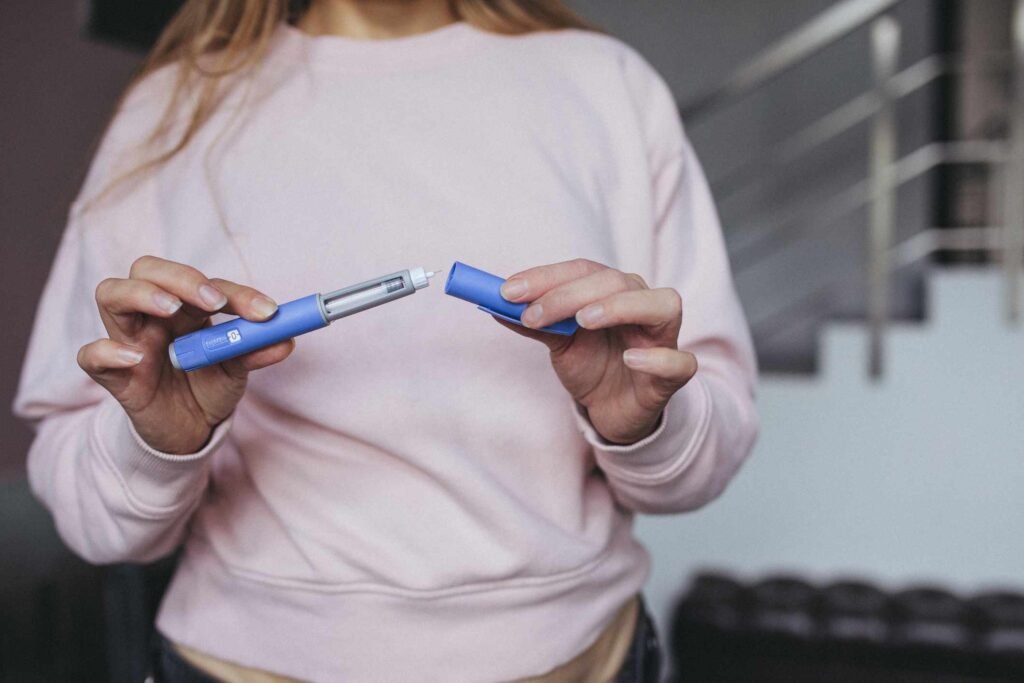Ozempic (semaglutide) is a medicine used to manage blood sugar in adults with type 2 diabetes. It can also help you lose weight—but the U.S. Food and Drug Administration (FDA) does not approve Ozempic for this purpose. However, the FDA does approve the brand Wegovy for weight loss in people with obesity or overweight.
There’s no exact “start date” for when Ozempic will work, but studies show significant improvements often appear within a few months. Some people report noticing changes in their blood sugar or weight just a few weeks in, but results vary from person to person.
Ozempic doesn’t have the immediate effect on blood sugar that insulin has. However, your blood sugar levels should start to improve once you’re on your regular maintenance dose, which typically begins after the first four weeks.
For people without diabetes, Ozempic usually doesn’t lower blood sugar because it only works when blood sugar is higher than normal.
If you are prescribed Ozempic to manage blood sugar levels, your doctor will usually start you on a lower dose of 0.25 milligrams once weekly for about four weeks. Depending on how your body responds or how well you tolerate it, your doctor may gradually increase the dose to a maintenance dose of 0.5 milligrams, then 1 milligram, and up to a maximum of 2 milligrams per week.
Two major phases occur when you take Ozempic:
Steady State (4-5 weeks)
Steady state refers to when a drug reaches stable levels (concentration) in the blood. You have to take Ozempic once weekly for about four to five weeks consistently to achieve this state. During this time, your body adjusts to the Ozempic treatments and most of its side effects.
Full Effectiveness (8 weeks or longer)
Once steady state has been reached, it can take about eight weeks or longer for the full effect of Ozempic to be felt. However, this time may vary from person to person due to factors like age, weight, additional medications you take, or any other medical conditions.
Several factors can affect how quickly your body responds to the effects of Ozempic. These include:
- Adherence to treatments: It may take longer to see results if you are not consistent with your Ozempic treatment.
- Medications: Medications like Lasix (furosemide) and Hydrodiuril (thiazide diuretics) can reduce the effectiveness of semaglutide.
- Lifestyle factors: Ozempic works better when used together with lifestyle changes, particularly a balanced diet and physical exercise. As a result, what you eat and how you move can determine how quickly you see results in Ozempic.
- Dose: If you are still on lower doses of Ozempic, it may take you longer to see the full effects of the medication.
- Medical conditions: The presence of other existing medical problems, especially those that affect how your body regulates sugars or body weight, may affect how fast you see results with Ozempic.
- Age: Older adults may have a higher risk of side effects, such as hypoglycemia (low blood sugar), which might lead to dose reduction or even skipped doses and, in turn, affect treatment response.
Many people use weight loss or a drop in blood sugar as a clear-cut sign that Ozempic is working. However, there are other ways to tell that Ozempic is doing what it is meant to. Some of these include:
- More stable blood sugar after meals
- Lower preference for calorie-dense food
- Feeling less hungry or fuller more quickly during meals
- Reduced craving or snacking between meals
- Better appetite control
You may also notice side effects like nausea, vomiting, diarrhea, stomach pain, or constipation. These stomach-related side effects are more common with higher doses.
Stomach-related side effects like nausea and vomiting mainly occur during a dose increase. In severe cases, these side effects may lead you to skip doses or stop your treatment altogether, which can slow your progress and delay results with Ozempic.
In most cases, these side effects resolve on their own over time. In the meantime, here are some ways you can manage common side effects:
- Avoid lying down after having a meal.
- Try eating foods that ease symptoms of nausea, such as crackers, apples, ginger, and mint, about 30 minutes after your last dose.
- Limit certain foods that can worsen symptoms, like salty or spicy foods.
- If nausea or vomiting is severe, try to avoid drinking liquids during your meals. Instead, drink water 30-60 minutes before or after meals.
- Eat slowly and in smaller portions.
- Do some light exercises.
- If you are constipated, gradually increase your fiber intake.
If you are taking Ozempic to manage blood sugar, do not stop the medication without first talking to your doctor. If these stomach-related side effects persist after trying these remedies, talk to your doctor. They may reduce your dose or suggest an alternative treatment.
Some other symptoms of Ozempic can have serious health effects. Seek immediate medical care if you experience any of these symptoms:
- Vision changes
- Difficulty breathing or swallowing
- Swelling of your legs, ankles, or feet
- Increased heart rate
- Pain in the upper left or middle abdomen that does not go away and may spread to the back
- Decreased urination
The exact time when you begin to notice the effects of Ozempic varies from person to person. Generally, it takes about four to five weeks for your body to get used to the medication and about eight weeks for you to see noticeable changes.
Other factors can affect your timeline, such as the dose, whether you are taking any other medications or have other medical conditions, and whether or not you include lifestyle changes.

